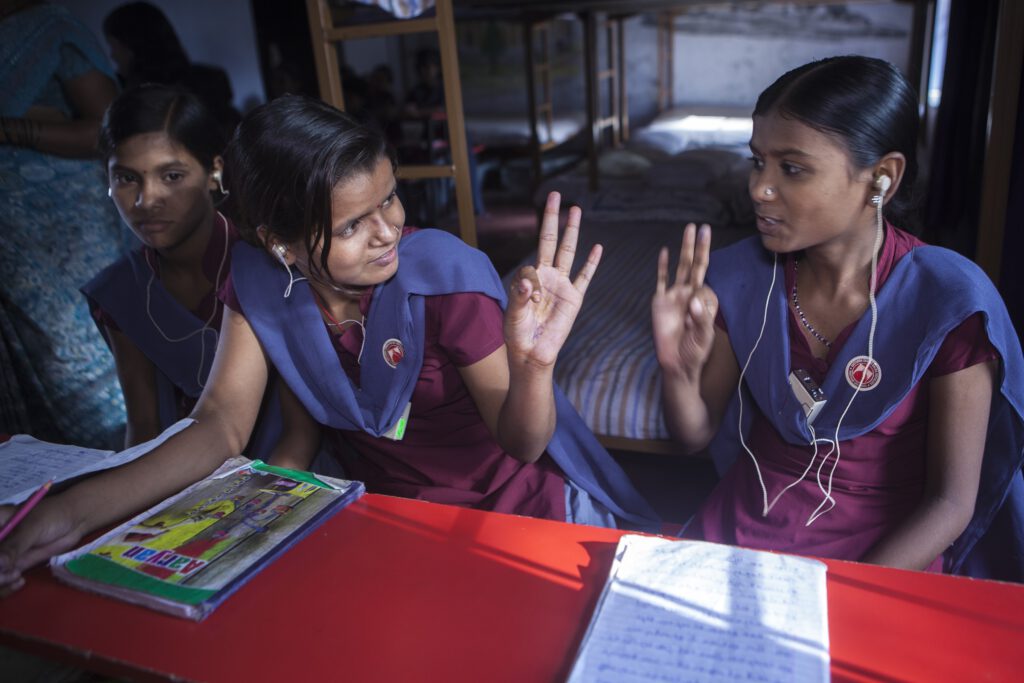It is estimated that a total of 264 million primary and secondary school-age children are out of school globally, and it is a commonly accepted notion that children with disabilities especially in developing countries and conflict zones tend not to attend school. However, it is not known if children with disabilities are a sizable share of out of school children and how big the school attendance gap between children with and without disabilities would be.
Disability is addressed in two targets of SDG4 – Ensure inclusive and equitable quality education for all:
- Target 4.5 “By 2030, eliminate gender disparities in education and ensure equal access to all levels of education and vocational training for the vulnerable, including persons with disabilities, indigenous peoples and children in vulnerable situations.”
- Means of Implementation SDG 4.a “Build and upgrade education facilities that are child, disability and gender sensitive and provide safe, nonviolent, inclusive and effective learing environments for all”

It will be imperative to address bottlenecks to school attendance for children with disabilities to achieve the SDG4 goals.
One significant bottleneck for education policy makers to support children with disabilities is the lack of data. There is a lack of concrete data showing the true scale of disabilities worldwide, which constrains the abilities of education stakeholders to rigorously analyze and monitor the educational situation of children with disabilities.
There have been several attempts made to establish global standards in disability measurement. The Washington City Group on Disability Statistics (WG), which is a UN city group established under the UN Statistics Commission, developed data collection tools that can produce cross-nationally comparable data on persons with disabilities.
A recent article published in the journal World Development, based on earlier UNICEF Innocenti research analyzes the gap in both primary and secondary school enrolment among children with disabilities across 15 developing countries. The article is based on nationally representative survey data sets which used the Washington Group Short Set of Questions (WG-SS) for disabilities.
disability consistently reduced the chance of primary and secondary school attendance by a median of a 31 percentage points
The new paper indicates that disability consistently reduced the chance of primary and secondary school attendance by a median of a 31 percentage points. In 13 out of the 15 countries studied, disability reduced the probability of attending school more than 10 per cent. In an extreme case, disability reduced school attendance by 61 per cent for boys and 59 per cent for girls in Indonesia.
The study also revealed that about 90 per cent of children with disabilities who are out of school have never attended school.
Out of School Children Rates Among Secondary-School Age Children

While there are papers which provide evidence that household income level is correlated with a higher attendance rate of children with disabilities, our fixed-effect model shows that general income transfer (e.g., social assistance) is not likely to close the school attendance gaps between children with and without disabilities. While some countries, such as Kenya, attempt to enroll children by providing a “disability school grant,” the findings of the paper suggest that such transfers improve enrolment of children with disabilities but do not contribute to closing enrolment gaps. However, other interventions such as: inclusive education curriculum, teacher training to boost pedagogical skills to help reach children with disabilities, reforms on certification exams, inclusive education information systems and early detection and prevention programmes, are necessary to address supply-side bottlenecks.
More and more countries are implementing household surveys with questions to identify persons with disabilities based on the Washington Group’s recommendations. However, the WG-SS was designed to capture functional difficulties in the adult population and does not include important functional domains for children such as learning, attention and emotions. Hence, many children with disabilities are likely to be missed in surveys that are based on the WG-SS. The results of this paper should therefore be interpreted as indicative of only a sub-set of children with disabilities.
 UNICEF and the Washington Group jointly released in 2016 a dedicated survey module on Child Functioning which measures functional difficulties in children between 2 and 17 years old in 2016. The module has been included in MICS6, which is going to cover more than 40 countries between 2017 and 2019. The datasets would be available in the first quarter of 2018 and onward, which will further reveal educational status of children with disabilities.
UNICEF and the Washington Group jointly released in 2016 a dedicated survey module on Child Functioning which measures functional difficulties in children between 2 and 17 years old in 2016. The module has been included in MICS6, which is going to cover more than 40 countries between 2017 and 2019. The datasets would be available in the first quarter of 2018 and onward, which will further reveal educational status of children with disabilities.
Suguru Mizunoya is a statistics and monitoring specialist with the UNICEF data and analytics team in New York. His research on global school enrollment of children with disabilities was first published while he was a research fellow at the UNICEF Office of Research – Innocenti. Explore the UNICEF Innocenti research catalogue for new publications. Follow UNICEF Innocenti on Twitter and sign up for e-newsletters on any page of the UNICEF Innocenti website.


